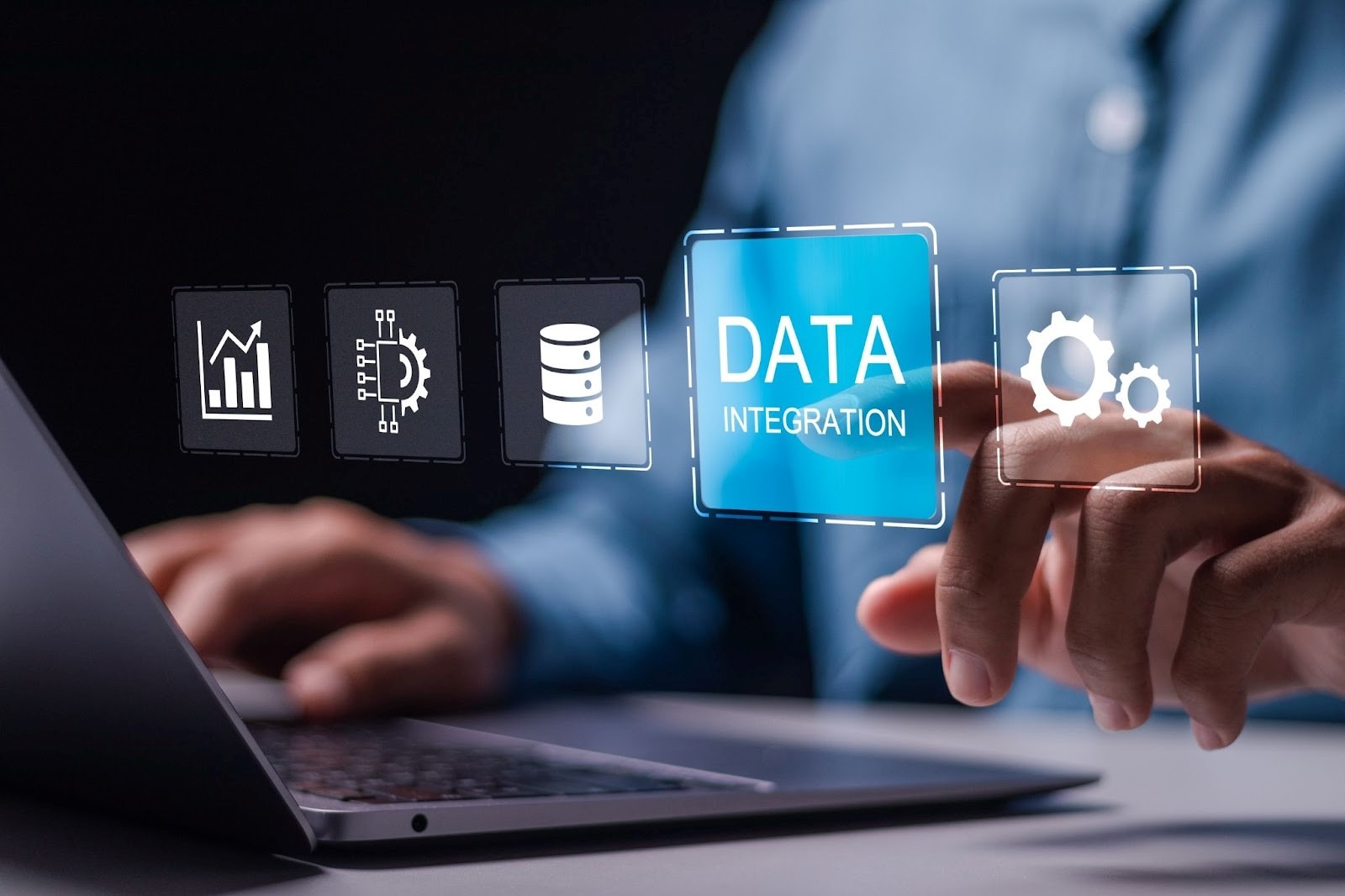The U.S. construction industry is a cornerstone of the national economy, comprising more than 919,000 establishments and a workforce of nearly 8 million people, which generates almost $2.1 trillion in structures annually (AGC). The sector, being part of the progress, requires the highkey change that is the intrinsic character of the digital transformation. The change happened because it is far more useful, convenient, and efficient for all the constituents involved in the construction process. The latest and probably the most efficient method is BIM, which is chosen by 74% of contractors, 67% of engineers, and 70% of architects in the United States as of 2023 (PlanRadar).
This digital transformation highlights the crucial roles of data migration and data integration in contemporary construction practices. From moving legacy information into cloud-based project management tools to syncing real-time data across job sites and departments, both processes are fundamental to creating a connected and efficient construction ecosystem.
The proficient management of data is important as it helps to increase the effectiveness of the operations, ensures the correctness of the project as well, and keeps the company competitive. The issue, however, is that the industry is still facing serious problems, the most significant being that poor data quality has caused a loss of approximately $1.8 trillion to the contractors in 2020 alone (CFMA). The methods that would be suitable for overcoming this situation would be to have full knowledge of the data migration, thus being able to program the new data in the systems, and also know how data integration keeps them in harmony and working well.
In this blog, we’ll break down what data migration and data integration really mean, their benefits, and how they differ. We’ll also explore how they complement each other and help you determine which one your construction business truly needs to thrive in the digital age.
What is Data Migration?
Data migration is the process of transferring data from one system, storage type, or format to another. Typically, this occurs during system upgrades, cloud transitions, or consolidations. The goal is to move data securely and accurately with minimal disruption.
Key Components of Data Migration:
- Extraction: Retrieving data from the source system
- Transformation: Reformatting or cleaning the data to fit the new system
- Loading: Importing the transformed data into the target environment
Whether moving to a modern ERP or shifting to the cloud, data migration services are crucial to ensuring that your data remains usable, compliant, and accessible after the move.
Benefits of Data Migration
- System Modernization: Enables organizations to upgrade to more efficient or secure platforms.
- Improved Performance: Newer systems often offer better speed and reliability.
- Cost Savings: Consolidating data can reduce maintenance and operational costs.
- Risk Mitigation: Reduces the risk of data loss by moving away from outdated or unsupported systems.
Many organizations rely on professional data migration services to ensure a smooth and secure data migration, minimizing risks such as data loss, corruption, or downtime.
What is Data Integration?

While migration moves data from one place to another, data integration combines data from different sources to provide a unified view. It’s foundational for business intelligence, analytics, and real-time decision-making.
Key Components of Data Integration:
- Data Sources: ERP, CRM, databases, cloud services, APIs
- Data Mapping: Aligning data fields across sources
- Data Flow Management: Ensuring timely and synchronized data exchange.
Modern data integration platforms and data integration tools enable organizations to automate these processes and ensure data quality, consistency, and availability.
Benefits of Data Integration
- Unified Insights: Aggregate data from multiple sources for better decision-making
- Improved Collaboration: Shared access to synchronized data across departments
- Real-time Reporting: Up-to-date information available on demand
- Automation: Streamlined workflows that reduce manual data handling
Organizations can turn raw data into actionable insights using proper data integration tools.
Data Migration vs Data Integration: Key Differences
Data migration is essential for moving data during infrastructure changes, while data integration is key for ongoing analytics and operational efficiency.
| Features | Data Migration | Data Integration |
| Purpose | Move data from one system to another (one-time) | Combine data from multiple sources (ongoing) |
| Frequency | Typically, a single event | Continuous, real-time, or scheduled process |
| Approach | Project-based, with a clear start and end | Ongoing, supports business operations |
| Tool | Data migration services, migration tools | Data integration tools, data integration platforms |
| Outcome | Data available in a new system | Unified, accessible, and consistent data view |
| Use cases | System upgrades, cloud adoption, mergers | Business intelligence, analytics, and cross-system reporting |
How do data migration and data integration work together?
Data migration and data integration mostly go together. For example, data integration can organize and clean the data before the migration, ensuring that there is only high-quality, coherent data that is going to be transferred. In other words, after a successful data migration process, data integration is used to make sure that the new system can interact and share data with other platforms through a unified view of the organization.
Integration vs. Migration: Which One Do You Need?
If your business is moving to a new system or platform, you’ll need data migration. If your challenge is syncing data across tools and departments, data integration is your answer.
Sometimes, it’s not about choosing one over the other but aligning both efforts strategically. Here are a few questions to consider:
- Are you replacing or upgrading systems? → Data migration
- Do you need a consolidated view of data from multiple platforms? → Data integration
- Are you doing both at once as part of a larger transformation? → You need both
Why Choose OnIndus?
OnIndus is expert in both data migration services and data integration solutions that fit your project management needs. Our team consists of professionals who ensure seamless data migration throughout all the stages that the process includes: from the assessment and mapping through the validation and ongoing support. By using the latest data integration tools and a solid data integration platform, we aim to consolidate your data sources for real-time insights, optimized collaboration, and cost savings.
With OnIndus, you benefit from:
- Experienced professionals in data migration and data integration
- Customizable solutions for your unique requirements
- Secure and reliable processes
- Ongoing support throughout your data journey
Conclusion
Understanding the difference between data migration and data integration is critical for effective data management. While data migration is about securely moving data to new systems, data integration ensures ongoing access to unified, actionable information. Both are essential for organizations aiming to stay competitive in a data-driven world. With the right partner, like OnIndus, you can harness the full potential of your data through expert data migration services, a streamlined data migration process, and cutting-edge data integration tools and platforms.
FAQs
Q: What is the difference between data migration and data integration?
Data migration is a one-time process of moving data from one system to another, while data integration is an ongoing process of syncing data across multiple systems for real-time visibility.
Q: When do you need data migration services?
You need data migration services when switching to a new software platform, undergoing system upgrades, or consolidating data storage solutions.
Q: What are some top data integration tools?
Some widely used data integration tools include Informatica, Talend, MuleSoft, and Microsoft Azure Data Factory. These tools help automate data synchronization across sources.
Q: Is a data integration platform suitable for small businesses?
Yes, many data integration platforms offer scalable solutions for businesses of all sizes, including small and mid-sized organizations.
Q: Can I use data migration and data integration together?
Absolutely. In most digital transformation projects, data migration is followed by data integration to ensure the migrated data is usable across business systems.

